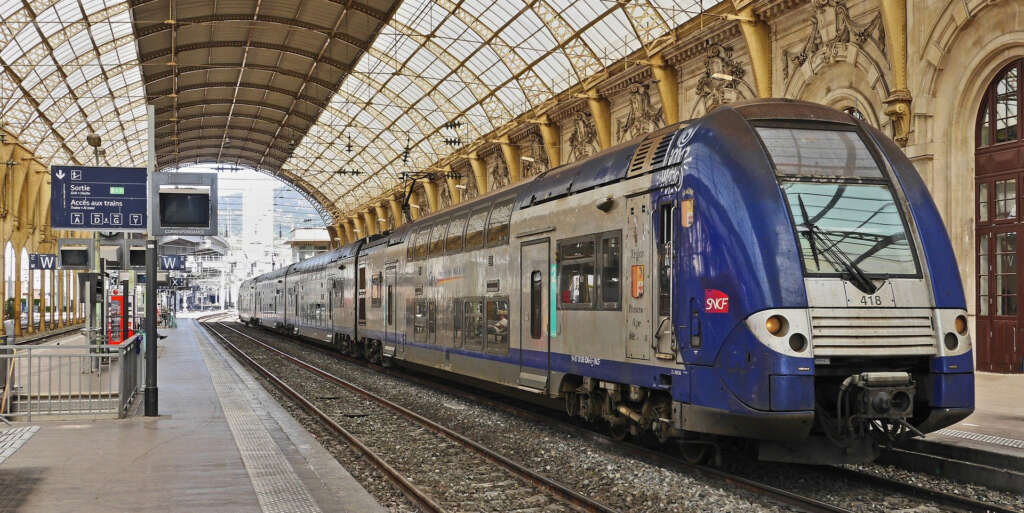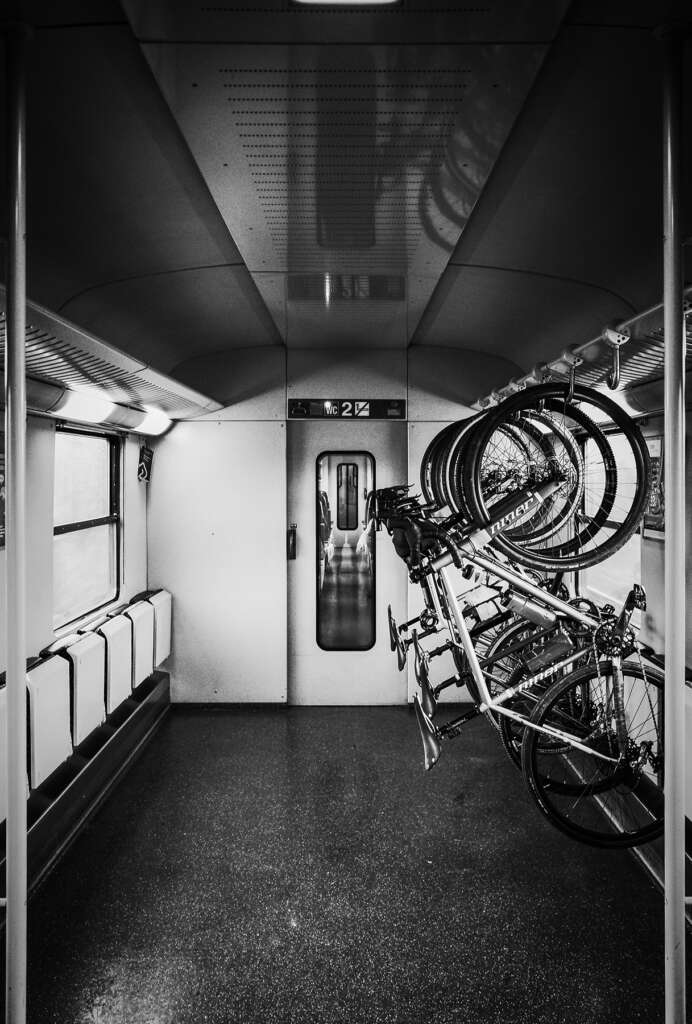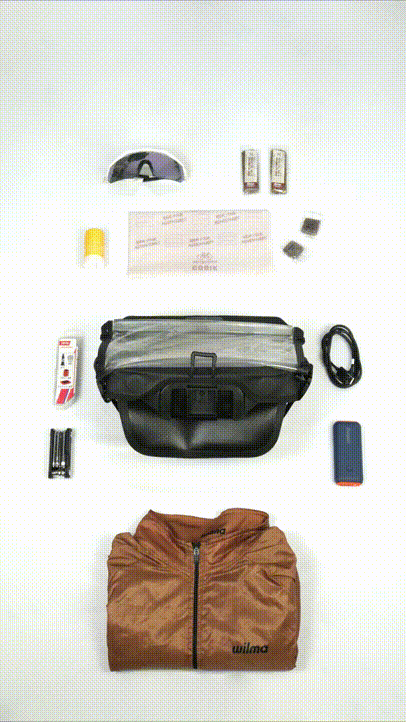Take the train with your bike
01 March 2022

Taking the train with your bike is an effective solution for getting to a destination. However, if many journeys go very well, some trains do not always accept assembled bicycles or are not always suitable for bicycles. All this can be problematic for travelers, especially when they have additional luggage.
Good news, cycling is on the rise and the number of cyclists on trains is increasing. So much so that French legislation (source) has evolved in favor of the bicycle. Bike spaces have become compulsory from March 2021 on new trains or when there is a renovation on them. Bicycles in trains should become more common in the coming years, which is very much to our liking!
1. Taking the train with your bike: the rules
In trains in France (and even more generally in Europe), there are generally two solutions for carrying your bike. Either the train has an accessible bicycle space, generally by reservation. Either the train does not have a bicycle space. In this case, we are offered to dismantle the bike and take it away in an adequate packaging.
a. The assembled bike
The trains are divided into three distinct categories:
- TGV: high speed trains
- Intercités: medium distance trains
- TER: regional trains
Depending on the category, the rules differ a little bit regarding bikes. In the TGV and Intercités, spaces are generally reserved in advance and are paid for. While in the TER, bicycles access is free, but not bookable.
- TGV that accept bikes
On the TGV lines, many of the trains do not accept assembled bicycles. You will have more luck towards the west of France or towards the Grand Est region. The south is generally less served by TGVs. Reserving the bike space costs an extra €10.
- Intercités that accept bikes
Most Intercités lines accept bicycles. The reservation price for the bike is 5 to 10€ depending on the region.
- TERs
Bicycles are generally accepted and free on TER lines. However, some small exceptions may occur, such as a ban on bikes at certain times (at peak times for example).
Carrying a bicycle is also subject to availability on the trains. If the bike spaces are already full, it may occur that you are refused boarding and that you have to wait for the next train.
This is why, if you make your journey with a TER in high tourist season, it is preferable to favor off-peak hours, outside weekends.
Regarding the TER, there is an exception in Brittany, on the BreizhGo network. Following the overabundance of bicycles on the train, the region has decided to make it a paying service and by reservation from the beginning of June until the end of September. Reserving a bike space costs €3 in addition to the ticket. The good news is that there are now more bike spaces on board the trains in the region!
b. The disassembled bike
When the train you have chosen does not allow carrying an assembled bike, there is a solution: place it in a bag.
It is not clearly stated that the bike must be completely disassembled. However, you have to place it in a case or bag, with maximum dimensions of 120x90cm, which does not leave much choice!
It will therefore be necessary to carry a bike bag in addition to your luggage.
c. Destinations more suitable for train and bike than others
On all of our Abicyclette Voyages stays, we provide information on access to our destinations, in particular by train. Some regions of France are a little less served than others.
For example, on the Loire by Bike, a train specifically designed for cyclists has been set up with numerous bicycle spaces. Similar initiatives should soon see the light of day in other regions, which will make life easier for bicycle tourists.

2. Book your ticket to take the train with your bike
To take the train with your bike, there are a few tips for finding tickets.
Indeed, if you do a simple search on the sncf-connect.com site, the results may tell you that there is no solution, when there is one. It is enough that you have a connection in TER for the site to display the route as unavailable with a bicycle.
For this, it is best to do a first search without a bike in order to know the route. If the search shows you a route with a connection, part of which with a TGV and the other by TER, make the reservation in two parts, indicating the bike for the TGV and without a bike for the TER.
On some lines, only one or two bicycle-friendly trains run per week. Do not hesitate to check the departure days.
If you cannot find a solution with an assembled bike, it is always possible to use our Abicyclette Voyages bike rental service or to dismantle the bike in order to pass it on as luggage.
3. Getting on the train with a bike
a. The platform
Once the tickets have been booked, all you have to do is go to the station. However, the access to the platform can become a real adventure. It all depends on the station and your departure route.
Luckily, disabled access (which is also used for cyclists) is becoming more and more frequent. Do not hesitate to check the presence of elevators or access ramps. These are sometimes a little hidden and it is not uncommon to have to ask the station staff for information.
If you have the choice of the departure station, favor one where the access will be the easiest or one where you will have time to arrive peacefully, as is the case from the departure station of the train.
b. Access to the train
If you take the train from the departure station and get off at the arrival station, getting on and off the train shouldn’t be a problem, you’ll have time. On the other hand, if you take it along one of the stops, the operation can be a little more delicate.
TGVs generally do not pose an accessibility problem, although there are often a few steps to go down or up depending on the train. The problem that we occasionally encounter concerns the bike space which is often poorly indicated for other users and, therefore, cluttered with suitcases. It is then necessary to call the controller so that the passengers come to clear the space. Quite a task!
Intercités trains, on the other hand, are usually old machines with high steps and tight doors. If your bike’s handlebars are a bit wide and you have panniers, removing the panniers can be a time-saving solution.
Finally, TERs are generally easily accessible if they are recent. The recurring problem you may encounter is overloading the bike space. If there are already several bikes onboard, the risk is that you will not be able to board.
The constantly evolving train + bike formula
Today, the problem of boarding a train sometimes discourages bike travelers and pushes them to take their vehicle. However, the service is evolving and everything can run like clockwork on board the trains. Luckily, cycle travelers are being considered more and more!<
At Abicyclette Voyages, we are aware of the problems caused by the train and we advise you on the best route options for your stays. To avoid taking the train with your bike, we have developed a rental service to offer you comfortable and ideal bicycles for your stays, whether mountain biking, cycling or road cycling. We have also set up a shuttle system to bring you back to your starting point without you having to worry about taking the train on your route.

